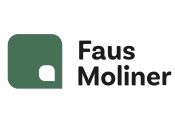Lessons from the regularisation procedure for homeopathic medicines
Judgments of the National High Court of 12 April, 16 May and 12 July 2024
Capsulas Nº 257
Background
The three judgments were handed down in the context of proceedings brought by a pharmaceutical company against the refusal of the Spanish Agency for Medicines and Medical Devices (“AEMPS”) to grant marketing authorisations for homeopathic medicinal products.
The requirement for marketing authorisation for homeopathic medicinal products was introduced by Royal Decree 2208/1994. However, this Decree included a Transitional Provision that allowed homeopathic products already on the market to continue being marketed, provided that they submitted the documentation for the authorisation and registration application.
Subsequently, Royal Decree 1345/2007 established that those homeopathic medicinal products that had benefited from the Transitional Provision of Royal Decree 2208/1994 would need to comply with its provisions and obtain the necessary marketing authorisation.
It was not until 2018 that the Ministry of Health, through a Ministerial Order, set forth the requirements and procedure for manufacturers of homeopathic medicines to apply for the necessary marketing authorisation.
On well-established use
The judgments we discuss refer to marketing authorisation applications for injectable homeopathic medicinal products. These injectable products were excluded from the simplified authorisation procedure provided for in Royal Decree 1345/2007 and had to follow the standard procedure.
The legal basis for the marketing authorisation applications for these medicinal products was article 10 of Royal Decree 1345/2007, which covers the authorisation of medicinal products based on sufficiently proven active substances (commonly known as “well-established use” or “bibliographic procedure”). On this basis, if it can be proven that an active substance has been in well-established medicinal use for at least ten years within the European Union, with recognised efficacy and an acceptable level of safety, the applicant can replace the pre-clinical and clinical trial data with bibliographic-scientific literature that provides scientific evidence in this regard.
In the cases analysed, the company had submitted clinical literature, mainly from the Encyclopaedia Homeopathica, and had stated that no relevant safety issues had been detected. In the court proceedings, the company argued that the AEMPS should only verify whether the medicinal product had been on the market in any Member State for over 10 years, whether it had been authorised using the same literature, and whether there were no indications of safety concerns.
AEMPS had refused the marketing authorisations applications for several reasons, particularly because adequate safety information for the medicinal product had not been provided. Regarding this point, the judgments confirm that the safety assessment, even in a procedure such as the bibliographic procedure, cannot be limited to merely checking that no safety issues have been detected (as stated in the judgments, this includes pharmacovigilance signals).
On the other hand, the judgments state that the AEMPS motivated its refusal decisions because the company did not provide specific literature to support the efficacy and safety in the indication, dosage, population group and route of administration requested.
Conclusion
These judgments highlight the importance of a thorough analysis of the scientific literature provided in any marketing authorisation application using the legal basis of well-established use. This is something to be considered also in similar cases such as industrially produced allergen-based medicinal products and bulk allergen-based medicinal products.
